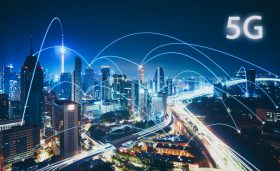Ericsson Bets Slow But Steady Will Win 5G Race

Ericsson is gearing up for its first commercial 5G deployments later this year as it simultaneously starts to pump more dollars into 5G-related research and development.
The accelerated adoption of 5G standards has moved timetables for delivering 5G technologies up by a year, but it’s not like carriers are going to make a wholesale transition, says Peter Linder, head of 5G marketing for Ericsson North America. Many carriers will continue to provide a range of 4G services for years come. As a result, there’s a significant amount of demand for so-called 5G ready networking equipment that can be upgraded at a timetable defined by the carrier, says Linder.
“They want to be able to reuse their existing core network investments,” says Linder.
In fact, Linder notes the line between 4G and 5G is becoming increasingly blurry.
Officially, 5G spectrum bands are supposed to be within the range of 1 Ghz to someday as high as 9 Ghz. But because some carriers have been able to optimize the performance of existing 4G deployments, some of them are already marketing those services as being 5G, says Linder.
Obviously, Ericsson has a vested interest in 5G as rivals such as Nokia, Cisco, and Juniper Networks are all racing to deliver 5G networking products and services. Carriers are expected to spend billions of dollars upgrading networks to deliver a wide variety of advanced mobile services. A whole range of compute systems deployed at the network edge will also drive emerging applications involving everything from advanced analytics infused with artificial intelligence to next-generation Internet of Things (IoT) applications.
The challenge carriers will face is slicing up their 5G networking investments to deliver those services using a mix of network function virtualization (NFV) and container software to provide the flexibility required to deploy and update highly distributed applications. The question Ericsson and all its rivals are contending with is to what degree will carriers rely on open-source versus commercial software to achieve those goals. Ericsson is betting most carriers will ultimately prefer to rely on a vendor to both curate open-source software and provide commercial offerings in a way that is more easily consumed by them, says Linder.
Ericsson may not be generating the same level of 5G buzz as some of its rivals. But in the long run a strong base of customers that already rely on Ericsson for 4G technologies will at the very least ensure Ericsson a pole position in a 5G race that is just now starting.




